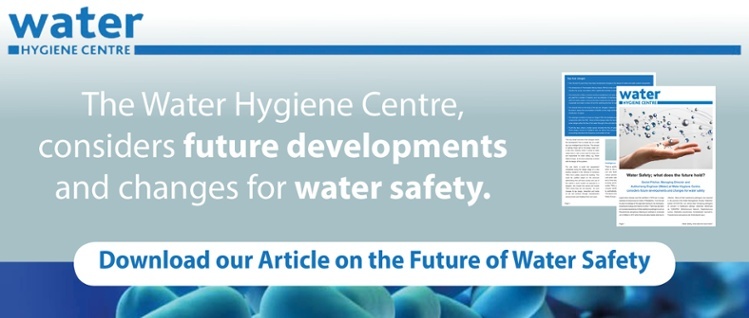What does BS8680 on Water Safety Plan - Code of Practice mean to me?
During the day-to-day management of domestic water systems, whether large or small, there are occasions when a problem occurs that needs attention. This may involve the warming of cold water, inadequate or variable hot water circulation, uncertainty as to when a Legionella risk assessment review may be needed or even clarity as to who is responsible for resolving the particular issue. Water system issues are common and numerous.
HSE ACoP L8
It’s times like these, that a clear plan or process document would be of great help to those who are having to manage these problems.
Guidance on the management of Legionella in the form of the HSE’s Approved Code of Practice L8 (ACoP L8) ‘Legionnaires disease, the control of legionella bacteria in water systems’ (2013), details a ‘written scheme’:
- For preventing or controlling the risk from exposure;
- That should be properly implemented and managed;
- Specifies measures to undertake to ensure that it remains effective.
HSG274 Part 2
Supporting guidance from the HSE’s HSG274 Part 2 ‘Legionnaires’ disease, Part 2: The control of legionella bacteria in hot and cold water systems’ (2014), details a written scheme ‘should be specific and tailored to the systems covered by the Legionella risk assessment’. Within HSG274 Part 2 ”water safety plans” (WSP) are introduced as a concept for healthcare premises. The WSP is a risk management approach to water safety, and broadly it should include:
- An assessment of risks to those potentially exposed;
- The establishment and implementation of appropriate management plans, for the management of risks associated with Legionella and other waterborne pathogens;
- Supporting strategies and processes (including training, competency and communication).
HTM04-01
For all healthcare organisations, the guidance from the Department of Health ‘HTM04-01: Safe Water in Healthcare Premises’ Parts A, B & C (2016) further develops the concept of a Water Safety Plan (having been introduced in 2013 within the HTM04-01 addendum).
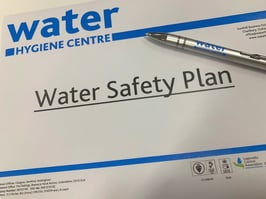 Firstly, a Water Safety Plan is defined as “A risk-management approach to the safety of water that establishes good practices in local water distribution and supply. It will identify potential hazards, consider practical aspects, and detail appropriate control measures”. Within Part B, Chapter 6, the Water Safety Plan is explained in more detail. Importantly the Water Safety Plan should be prepared by the Water Safety Group [WSG] and be a living document that is continually reviewed [by the WSG], to ensure it remains suitable for controlling the identified risks.
Firstly, a Water Safety Plan is defined as “A risk-management approach to the safety of water that establishes good practices in local water distribution and supply. It will identify potential hazards, consider practical aspects, and detail appropriate control measures”. Within Part B, Chapter 6, the Water Safety Plan is explained in more detail. Importantly the Water Safety Plan should be prepared by the Water Safety Group [WSG] and be a living document that is continually reviewed [by the WSG], to ensure it remains suitable for controlling the identified risks.
These identified risks can be mitigated by gaining a comprehensive understanding of the water systems throughout the building(s) from the incoming supply, storage, distribution, and usage. The provision of schematics also helps with the understanding of each system’s operation.
Originally, the concept of WSPs was introduced by the World Health Organisation and related to managing water, with the publication of ‘Water Safety in Buildings’. This identifies the need for a comprehensive strategy for water safety, for the varied uses of water from the concept stage, design, build, occupation, use, and ultimately, its demolition. This strategic document details how an organisation intends to assess the risk and then manage those risks to prevent harm as a result of exposure to the water.
A timeline summary of the WSP: 2004 WHO introduction, 2013 Department of Health introduces WSP, 2014 HSE acknowledges their use for healthcare, 2016 Department of Health further defines the WSP with the re-issue of HTM04-01. On the 29/05/2020 British Standards Institute published ‘BS8680 – Water quality – Water safety plans – Code of practice’
BS8680 – Water quality – Water safety plans – Code of practice’

This BS8680 Code of Practice (CoP) is very much anticipated as a source of guidance for many organisations [who are looking to develop or further refine their WSP]. At the outset, the CoP makes clear that the WSP for an organisation should be reflective of its size i.e. for a small hair salon, the WSP will also be very small [an example risk assessment matrix is provided for small businesses). As an organisation's size increases, then its WSP will need to be reflective of this (i.e., the user manual for a ‘toaster’ will be brief, the user manual for a ‘space station’ will be significantly greater than for the toaster!).
For those of us who are routinely involved in water safety, the undoing of poorly specified, designed, installed and commissioned water systems remains a major cause of frustration and at times particularly heartbreaking in the event of an [avoidable] outbreak. The concept of ‘getting it right first time’ is not new, although with many projects, large or small, and irrespective of whether a refurbishment or new build, this concept is not always achieved.
The BS8680 Code of Practice places a huge emphasis on the entire project from inception to completion and has helpfully defined processes to ensure all the key considerations are included in your WSP.
Regarding CoP Table 1 ‘Key design considerations’:
- Consultation – all stakeholders should agree on the intended water usage and users and what the appropriate water standards and design criteria are to be achieved.
- User Requirements – continued maintenance requirements/avoidance of situations, such as heat gain.
- Competence – all those involved in the project, from the design outset, procurement, installation, commissioning, and handover should have suitable Legionella training, and have relative experience and competence to complete their part of the project.
- Risk Assessments – The Water Safety Group should review the Legionella risk assessment at each stage of the project to ensure risks are mitigated.
- Supervision – for all those involved in the project, ensure there is supervision so only those deemed competent continue to deliver on their part of the project.
- Permit to Work – where required these should be issued.
- Commissioning – a defined process that should be followed and monitored to ensure adherence to the process by those competent persons.
- Handover – “Soft landing” information on the operation of the system, as well as all supporting documentation required for the project.
The BS8680 Code of Practice also includes an example Water Safety Plan checklist for new builds. With this brief overview, you can start to appreciate how a WSP, if prepared and implemented following the CoP, will provide improved assurance that projects will be managed in a more prescribed manner to avoid incidents and outbreaks.
In terms of where an organisation may need to start in the development of their WSP, it is helpful to think of the individual sections/parts the WSP would include and their associated supporting documentation. The CoP includes in Table 3 “examples of documents which might be required to support the WSP” – so the WSP is NOT one document but made up of many documents that help inform and shape this complex compliance issue.
The Water Hygiene Centre has for many years provided clients with a WSP model outlining the relevant documents that make up the WSP. Such documents include:
- Policy – defining:
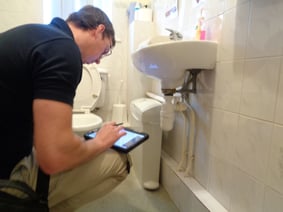
- Roles & responsibilities
- Communication pathways
- Training and Competency
- Water Safety Group – terms of reference
- Legionella Risk assessment needs and review
- Auditing and verification - Design Control – getting it right first time
- Specification
- Competency
- Risk assessment
- Design
- Install
- Commission
- Soft Landings & Handover - Risk Assessment – identification of hazards
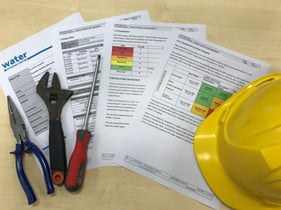
- Risk system/hazards list
- Asset registers
- Risk assessment
- Schematic Drawings - Controls Measures – the appropriate action to control those risk systems identified
- Risk assessment remedial action plans
- Controls strategies
- Monitoring controls and parameters
- Standard Operating Procedures
- Additional supporting programs - Sampling/incident response surveillance monitoring - Logbooks – evidence of control measures being implemented with evidence of appropriate action
To help organisations further, the BS8680 Code of Practice also includes a high-level gap analysis and an example development of a WSP, outlining a broad flowchart of the key elements detailed above. The combination of the gap analysis and the example development provides a clear visualisation of where your WSP review focus is most needed.
When considering “risk” the BS8680 Code of Practice is explicit, that for both healthcare and the leisure pool industry, when considering waterborne pathogens [such as Legionella, which is of greatest microbiological concern] then BS8580-1:2019 Water quality – Risk Assessment for Legionella control – code of practice should be followed.
In dealing with the competency element of a risk assessment, the WSG needs to ensure the competency of the risk assessment company is also established. The highest standard for Legionella risk assessment that could be established by the WSG, is UKAS accreditation to 17020 – we are proud to state that the Water Hygiene Centre is one of a select few accredited companies in the UK to this standard for Legionella risk assessments.
Following the identification of all types of water hazards [including biological, chemical, physical and radiological], asset and risk hazard lists can then be prepared to help draw up and define the control strategies that exist to minimise risk. This further defines the approach needed to ensure that monitoring parameters remain effective. The development of standard operating procedures is also identified, and that detail monitoring and sampling instructions for those competent persons with the responsibility to undertake such important tasks. The data from said tasks will then go on to demonstrate evidence of compliance and thus inform the Water Safety Group.
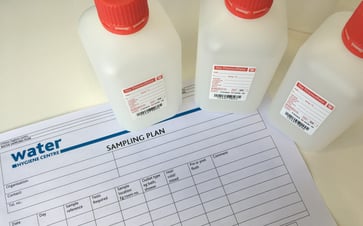 The opening of this blog provided some examples of what happens when things go wrong and the BS8680 Approved Code of Practice details the need for additional support programmes for adverse incidents or incidents of non-compliance which may occur, to be included in the WSP. Obvious inclusions are the response to take when dealing with positive Legionella water samples, positive Pseudomonas aeruginosa water samples, a loss of water to the site, a failure in control strategy, etc. The Water Safety Group would then seek evidence that incidents have been managed effectively following the Water Safety Plan.
The opening of this blog provided some examples of what happens when things go wrong and the BS8680 Approved Code of Practice details the need for additional support programmes for adverse incidents or incidents of non-compliance which may occur, to be included in the WSP. Obvious inclusions are the response to take when dealing with positive Legionella water samples, positive Pseudomonas aeruginosa water samples, a loss of water to the site, a failure in control strategy, etc. The Water Safety Group would then seek evidence that incidents have been managed effectively following the Water Safety Plan.
BS8680 – Water quality – Water safety plans – Code of practice needs to be read, absorbed, and given time to sink in. The production of your updated WSP is not going to be a quick development. At this stage, one suggestion may be to task your WSG working group or equivalent to look at undertaking the WSP gap analysis, working in conjunction with your Authorising Engineer (Water) or competent help, before final development within your WSG framework.
Our own WSP model has now been restructured to directly reflect the suggested content contained within BS8680, essentially breaking up the WSP into more manageable ‘bite-size’ parts. The most significant change is the creation of the ‘design control’ element, providing a focus for Design Teams/Project Managers as to the Water Safety Group’s project requirements.
Editors Note: The information provided in this blog is correct at the date of original publication – June 2020. (Revised September 2023)
© Water Hygiene Centre 2023




